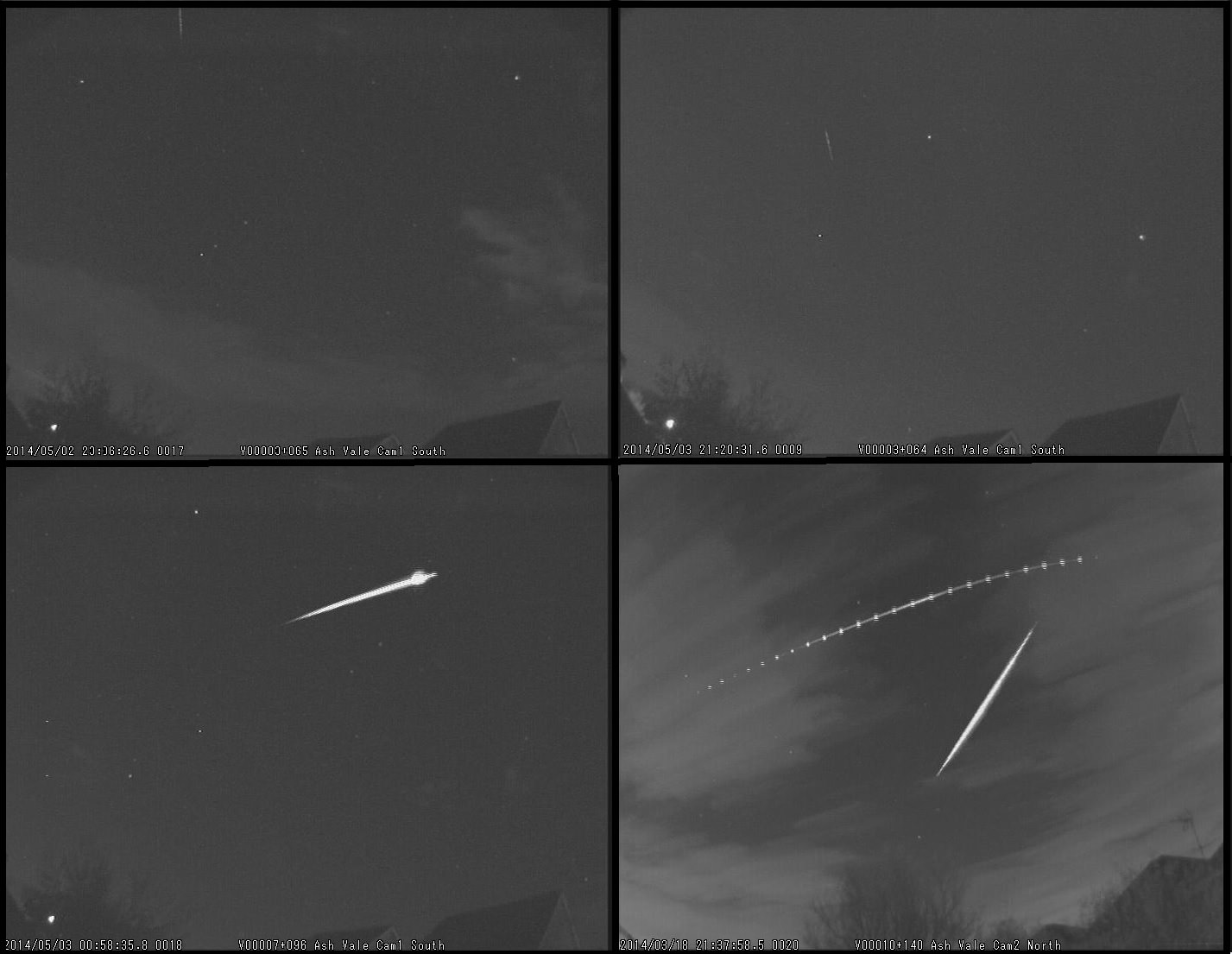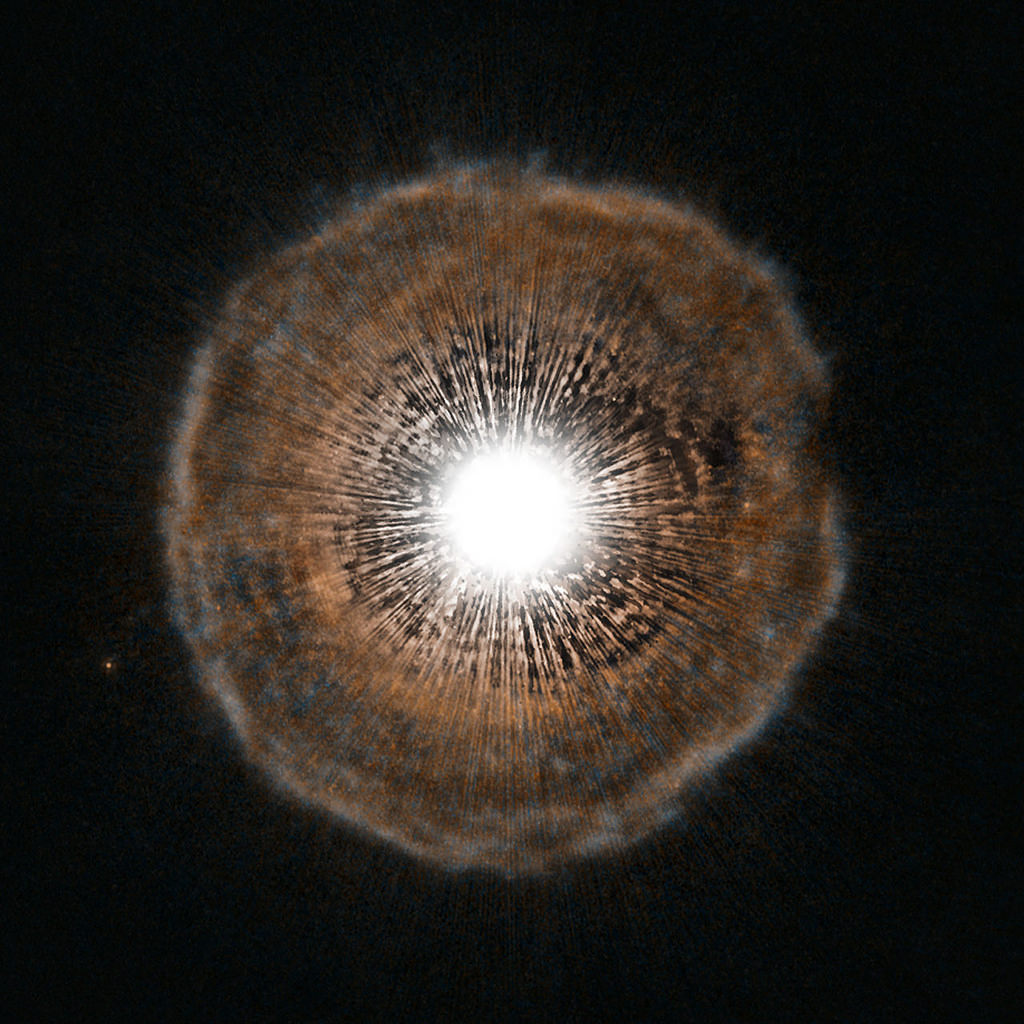It could be the best of meteor showers, or it could be the…
Well, we’ll delve into the alternatives here in a bit. For now, we’ll call upon our ever present astronomical optimism and say that one of the best meteor showers of 2014 may potentially be on tap for this weekend.
This is a true wild card event. The meteor shower in question hails from a periodic comet 209P LINEAR discovered in 2004 and radiates from the obscure and tongue-twisting constellation of Camelopardalis.
But whether you call ‘em the “209/P-ids,” the “Camelopardalids,” or simply the “Cams,” this weekend’s meteor shower is definitely one worth watching out for. The excitement surrounding this meteor shower came about when researchers Peter Jenniskens and Esko Lyytinen noticed that the Earth would cross debris streams laid down by the comet in 1803 and 1924. Discovered by the LIncoln Near-Earth Asteroid Research (LINEAR) automated all-sky survey located at White Sands, New Mexico, comet 209P LINEAR orbits the Sun once every 5.1 years. 209P LINEAR passed perihelion at 0.97 AUs from the Sun this month on May 6th.
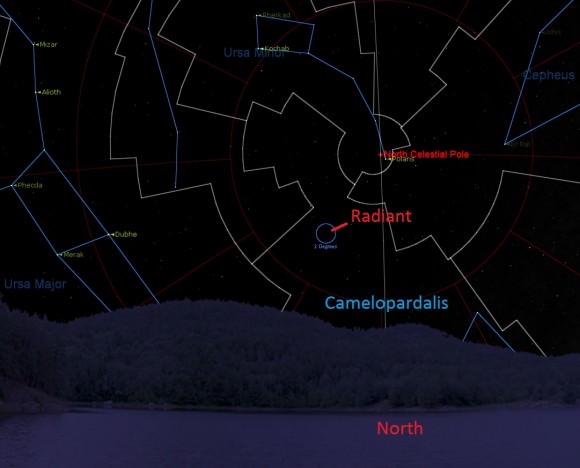
The meteor shower peaks this coming U.S. Memorial Day weekend on Saturday, May 24th. The expected peak is projected for right around 7:00 Universal Time (UT) which is the early morning hours of 3:00 AM EDT, giving North America a possible front row seat to the event. Estimates for the Zenithal Hourly Rate (ZHR) of the Camelopardalids run the gamut from a mild 30 to an outstanding 400 per hour. Keep in mind, this is a shower that hasn’t been witnessed, and it’s tough enough to forecast the timing and activity of known showers. It’s really a question of how much debris the 1803 and 1924 streams laid down on those undocumented passages. One possible strike against a “meteor storm” similar to the 1998 Leonids that we witnessed from Kuwait is the fact that the “Cams” have never been recorded before. Still, you won’t see any if you don’t try!
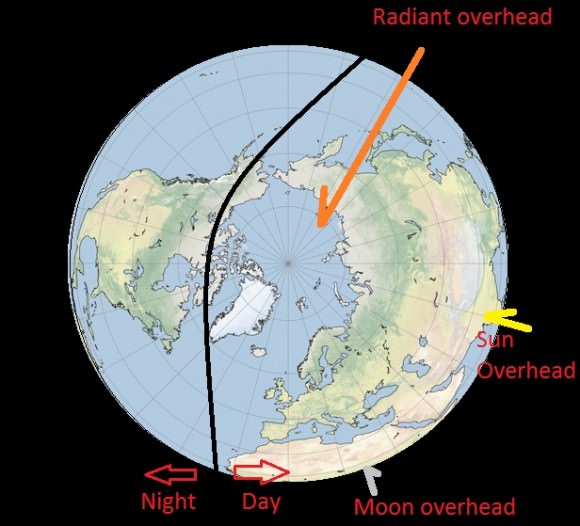
Comet 209P/LINEAR passes 0.055 AUs — about 8.3 million kilometres — from the Earth on May 29th, shining at +11th magnitude and crossing south into the constellation of Leo Minor in late May. Interestingly, it also passes 0.8 degrees from asteroid 2 Pallas on May 26th. Though tiny, comet 209P/LINEAR’s 2014 passage ranks as the 9th closest recorded approach of a comet to the Earth.
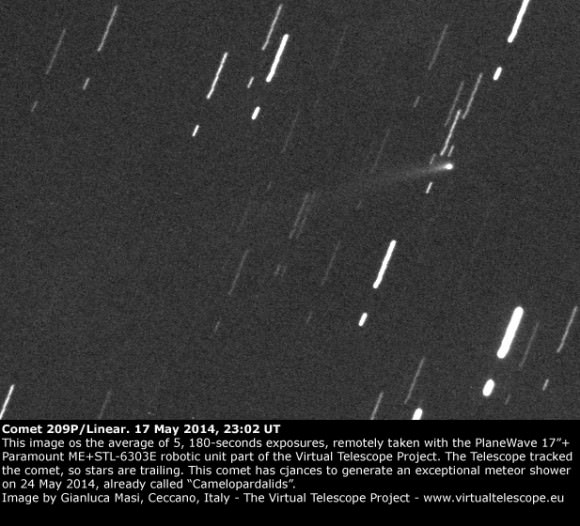
The Moon is also at an ideal phase for meteor watching this coming weekend as it presents a waning crescent phase just 4 days from New and rises at around 4:00 AM local.
The expected radiant for the Cams sits at Right Ascension 8 hours and declination 78 degrees north in the constellation of Camelopardalis, the “camel leopard…” OK, we’ve never seen such a creature, either. (Read “giraffe”). Unfortunately, this puts the radiant just 20 degrees above the northern horizon as seen from +30 degrees north latitude here in Florida at 7:00 UT. Generally speaking, the farther north you are, the higher the radiant will be in the sky and the better your viewing prospects are. Canada and the northern continental United States could potentially be in for a good show. Keep in mind too, the high northern declination of the radiant means that it transits the meridian (crosses upper culmination) a few hours before sunset Friday night at 6 PM local; this means it’ll have an elevation of about 38 degrees above the horizon as seen from 30 degrees north latitude just after sunset. It may well be worth watching for early activity after dusk!
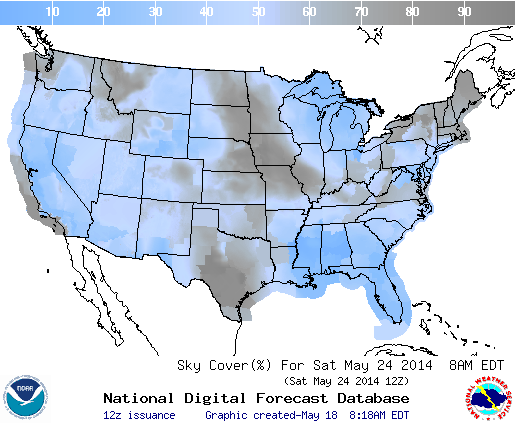
Clouded out or live on the wrong side of the planet to watch the Camelopardalids? Slooh will be carrying a live broadcast of the event starting at 3:00 PM PDT/ 6:00 PM EDT/ 22:00 UT. Also, the folks at the Virtual Telescope Project will carry two separate webcasts of the event, one featuring the progenitor comet 209P LINEAR starting at 20:00 UT on May 22nd and another featuring the meteor shower itself starting at 5:30 UT on May 24th.
Observing meteors is fun and easy and requires nothing more than a good pair of “mark-1 eyeballs” and patience. And although the radiant may be low to the north, meteors can appear anywhere in the sky. We like to keep a pair of binocs handy to examine any lingering smoke trains left by bright fireballs. Counting the number of meteors you see from your location and submitting this estimate to the International Meteor Organization may help in ongoing efforts to understand this first time meteor shower. And capturing an image of a meteor is as simple as setting a DSLR on a tripod with a wide field of view and taking time exposures of the sky… something you can start practicing tonight.
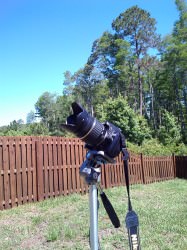
Don’t miss what could well be the astronomical event of the year… I’d love to see a meteor shower named after an obscure constellation such as the #Camelopardalids trending. And we fully expect to start fielding reports of “strange rocks falling from the sky” this week, which the cometary dust that composes a meteor shower isn’t. In fact, Meteorite Man Geoffrey Notkin once noted that no confirmed meteorite fall has ever been linked to a periodic meteor shower.
Don’t miss the celestial show!
-Got pics of the Camelopardalids? Send ‘em to Universe Today. There’s a good chance that we’ll run an after-action photo-round up if the Cams kick it into high gear.
-Read more about the Camelopardalids here in a recent outstanding post by Bob King on Universe Today.

